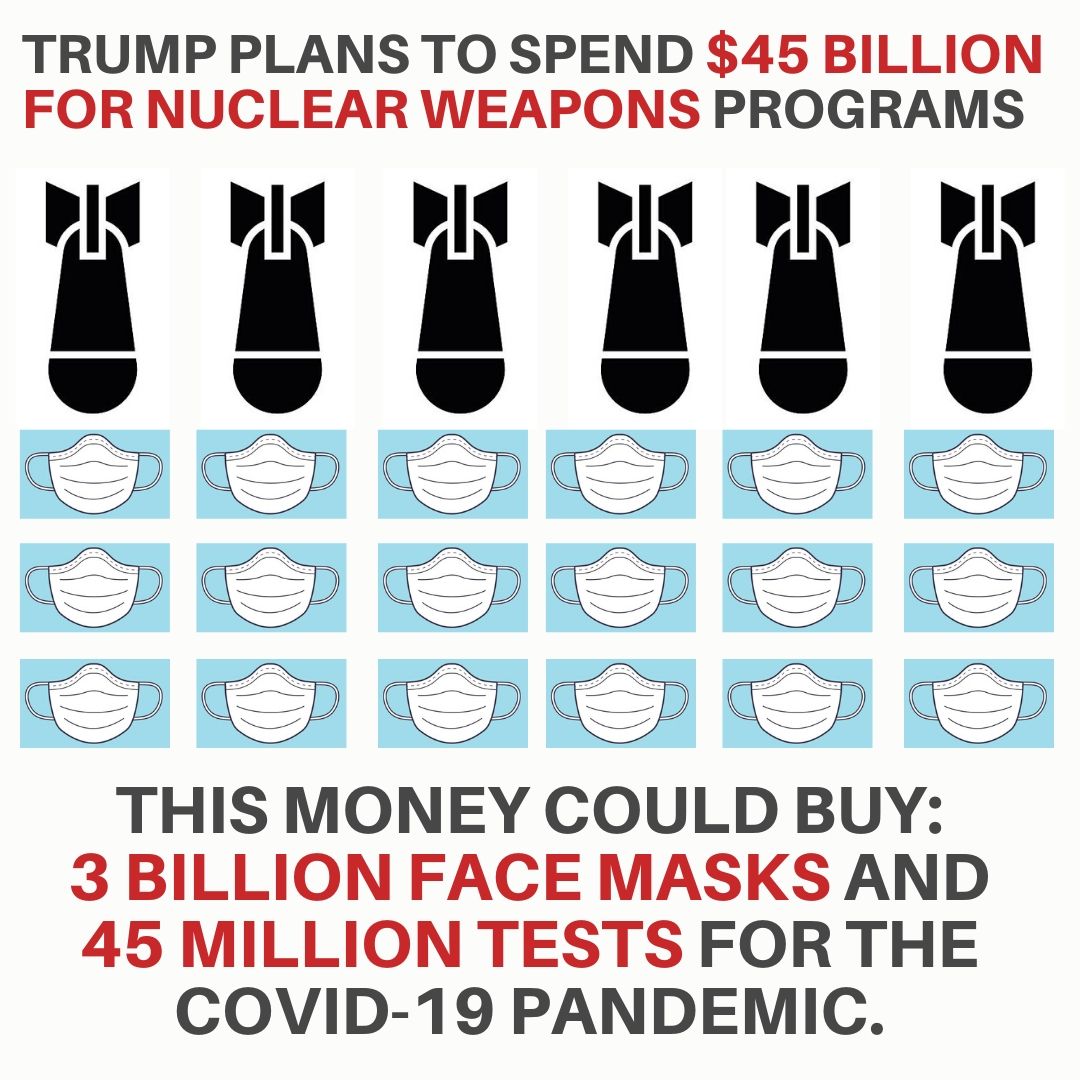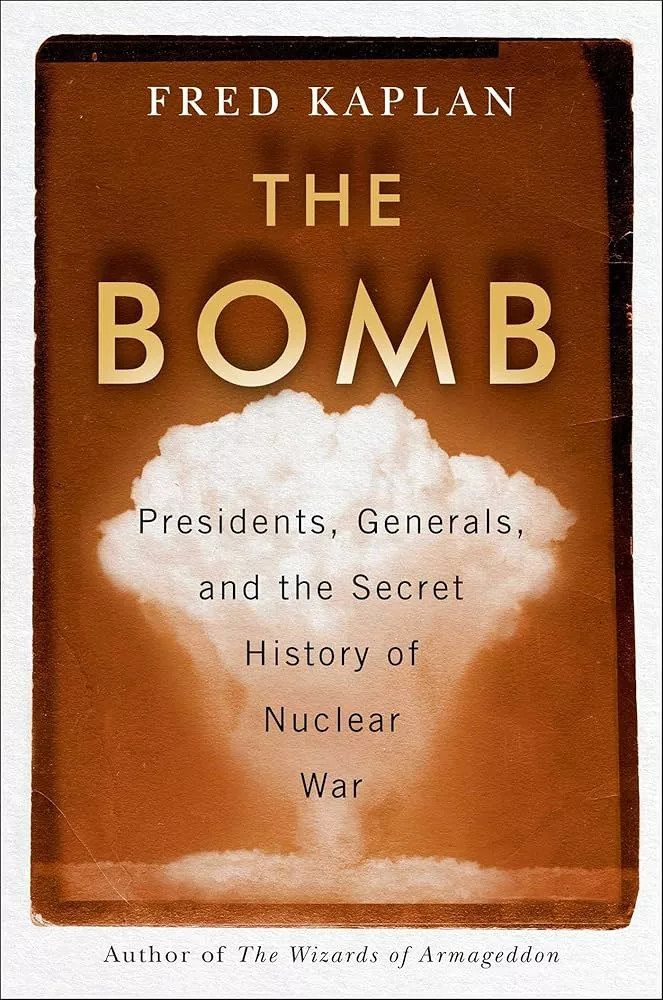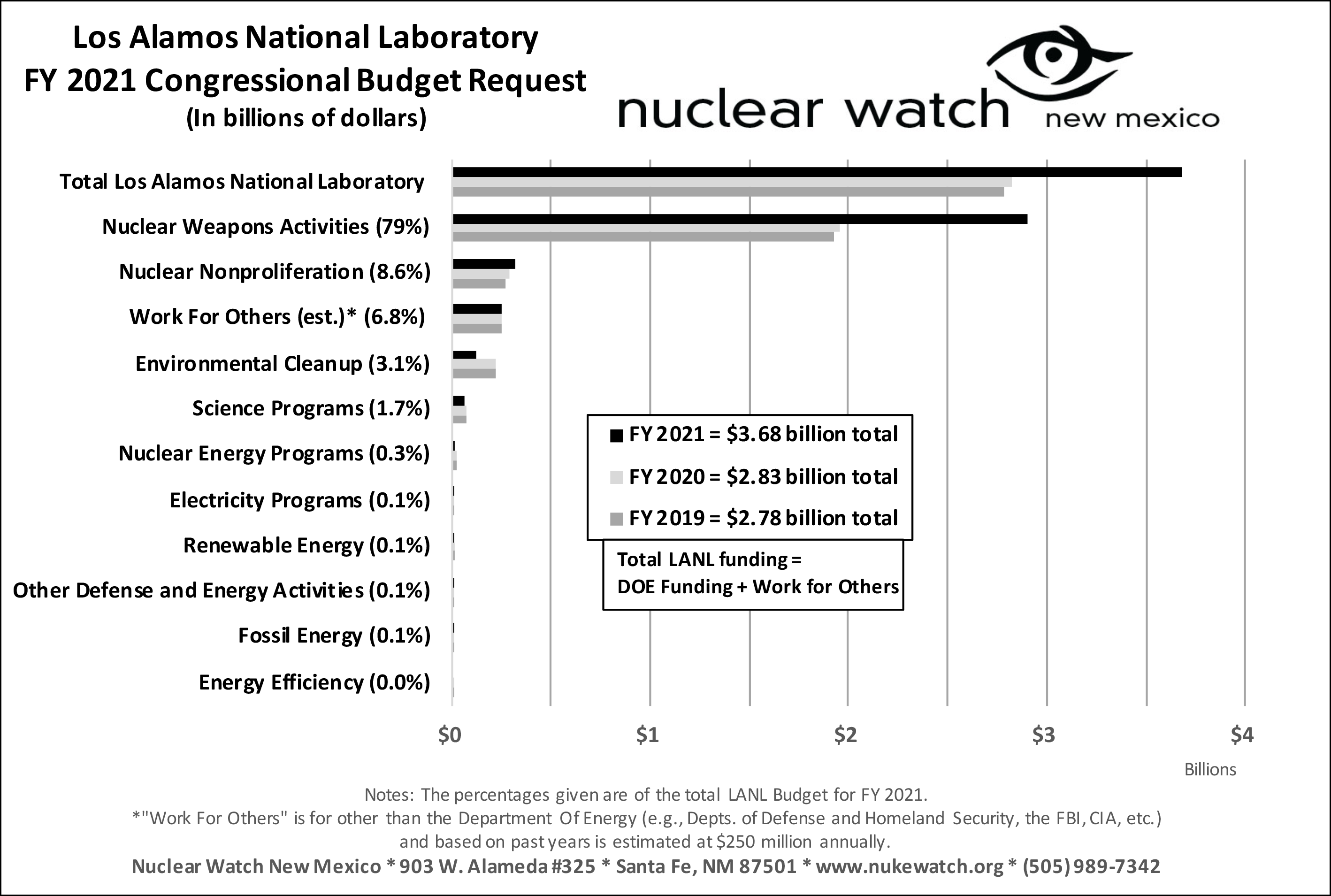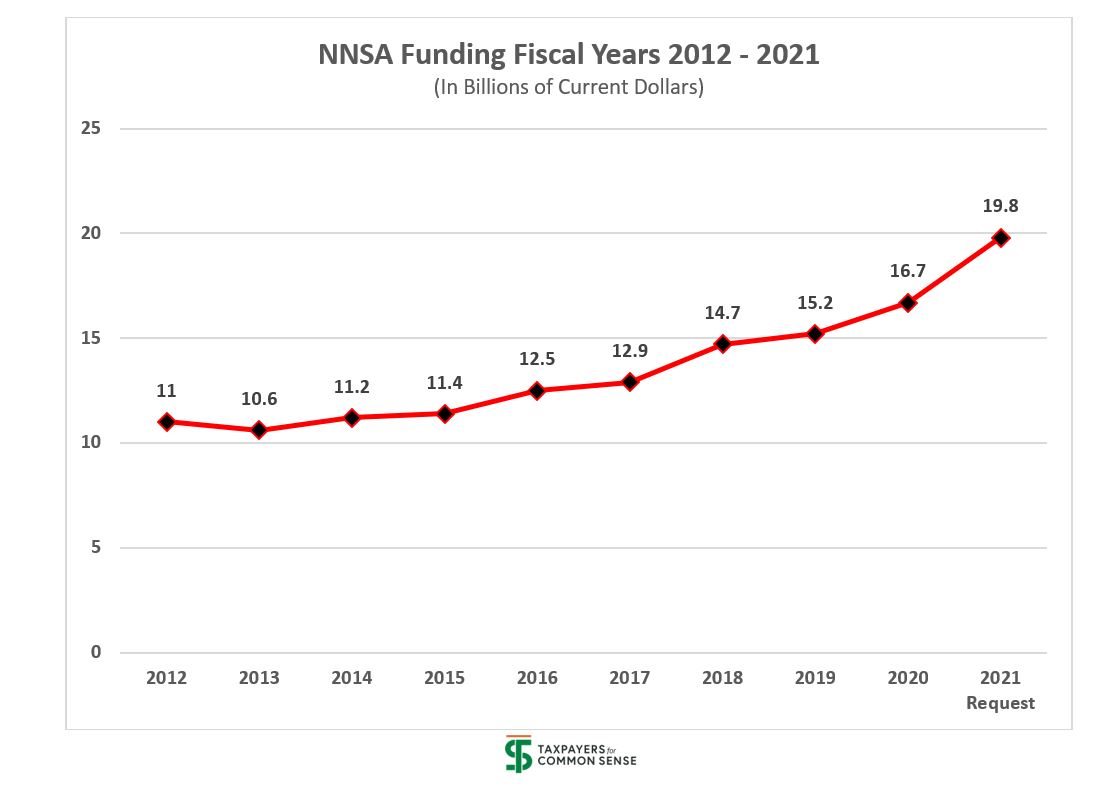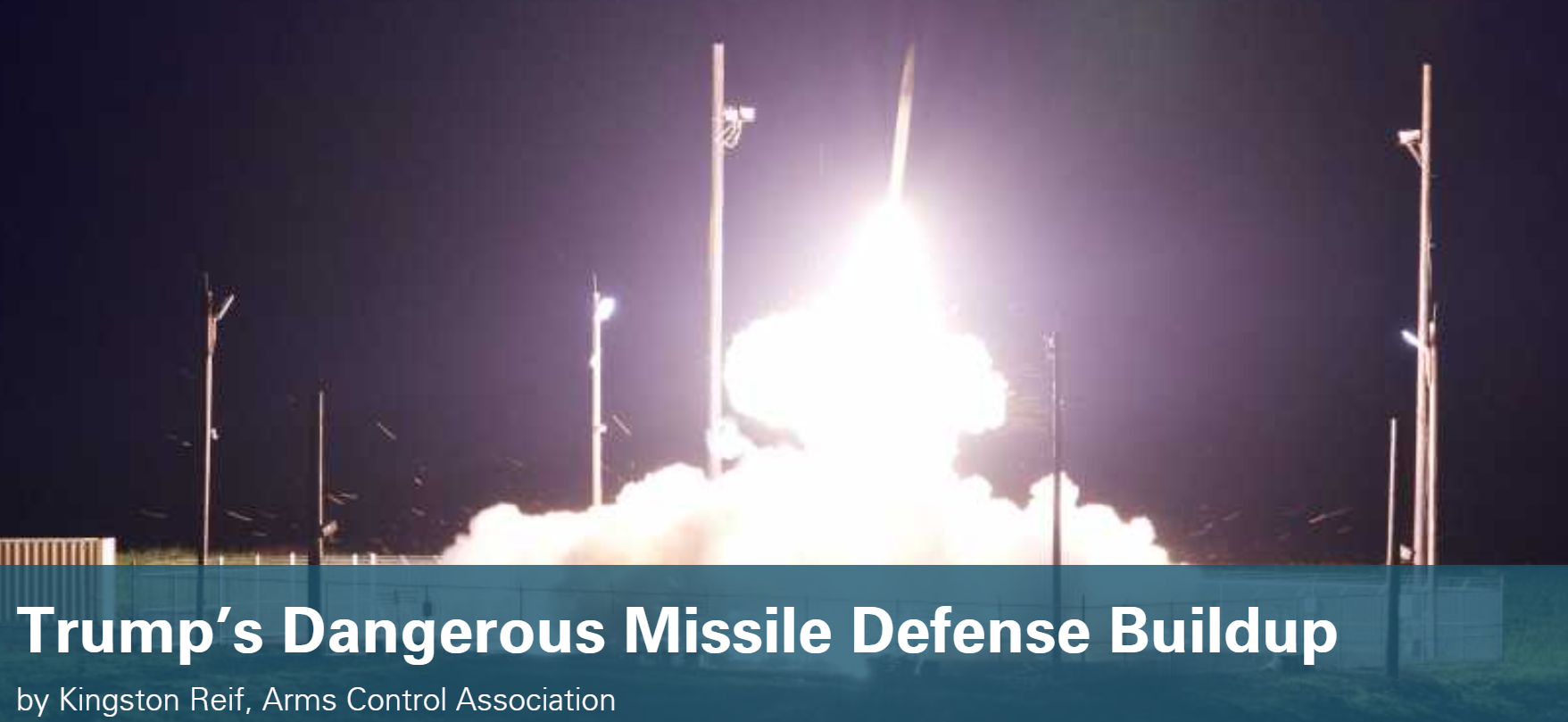Nuclear News Archives – 2020
E.P.A., Citing Coronavirus, Drastically Relaxes Rules for Polluters
“Environmental groups and former Obama administration officials described the policy as an unprecedented relaxation of rules for petrochemical plants and other major polluters.”
WASHINGTON — The Environmental Protection Agency on Thursday announced a sweeping relaxation of environmental rules in response to the coronavirus pandemic, allowing power plants, factories and other facilities to determine for themselves if they are able to meet legal requirements on reporting air and water pollution.
The move comes amid an influx of requests from businesses for a relaxation of regulations as they face layoffs, personnel restrictions and other problems related to the coronavirus outbreak.
Trump’s Environmental Rollbacks Find Opposition Within: Staff Scientists
“Federal scientists and lawyers, told to undo regulations that some have worked on for decades, have embedded data into technical documents that environmental lawyers are using to challenge the rollbacks.”
ARTICLE BY: CORAL DAVENPORT | nytimes.com
“WASHINGTON — President Trump has made rolling back environmental regulations a centerpiece of his administration, moving to erase Obama-era efforts ranging from landmark fuel efficiency standards and coal industry controls to more routine rules on paint solvents and industrial soot.
Most Hanford workers to stay home over coronavirus concerns. No word on for how long
The site in Eastern Washington was used during World War II and the Cold War to produce plutonium for the nation’s nuclear weapons program. It was left massively contaminated with radioactive and hazardous chemical waste, which is being cleaned up now at a cost of about $2.5 billion a year.
BY ANNETTE CARY | tricityherald.com
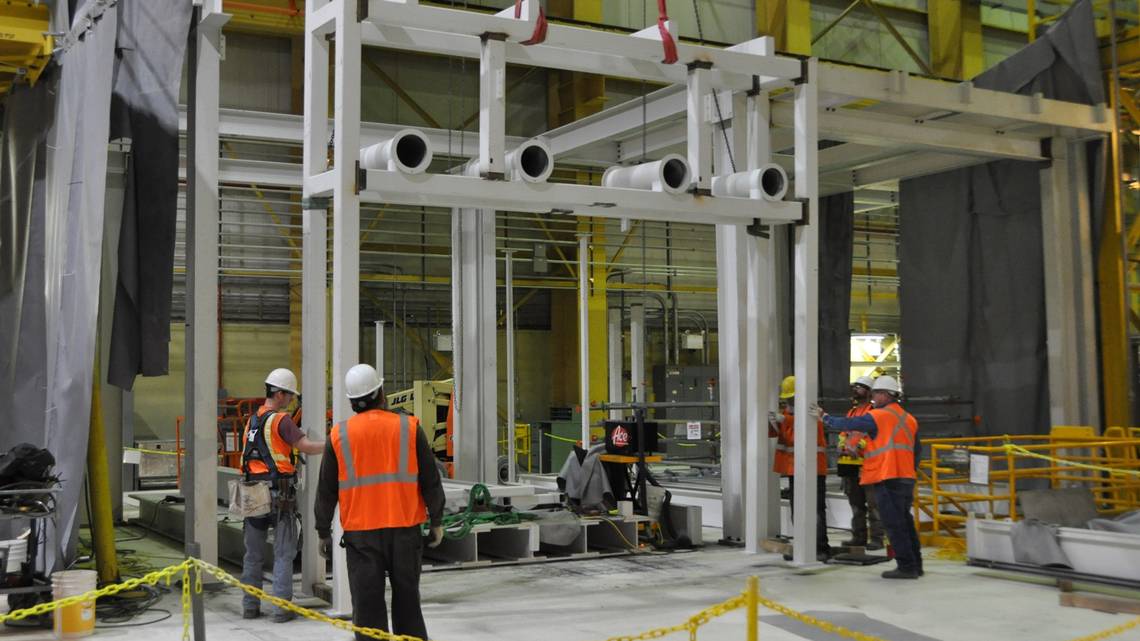
Thousands of Hanford workers will stay home for a second day Tuesday after the Department of Energy announced Sunday evening that the site was going into a temporary planning status to ensure the safety of employees during the COVID-19 pandemic.
Only workers essential to the nuclear reservation’s safety and security should report to work, unless they receive a call from their supervisor saying they are needed for planning work, DOE said.
Hanford employs about 9,300 workers, plus some additional subcontractor employees.
The Coronavirus and the Urgent Need to Redefine National Security
“In order to address serious domestic concerns [such as coronavirus], the United States must seek significant savings by reducing the Pentagon budget, ending endless wars, and returning to the arms control and disarmament arena.”
ARTICLE BY: MELVIN GOODMAN | counterpunch.org
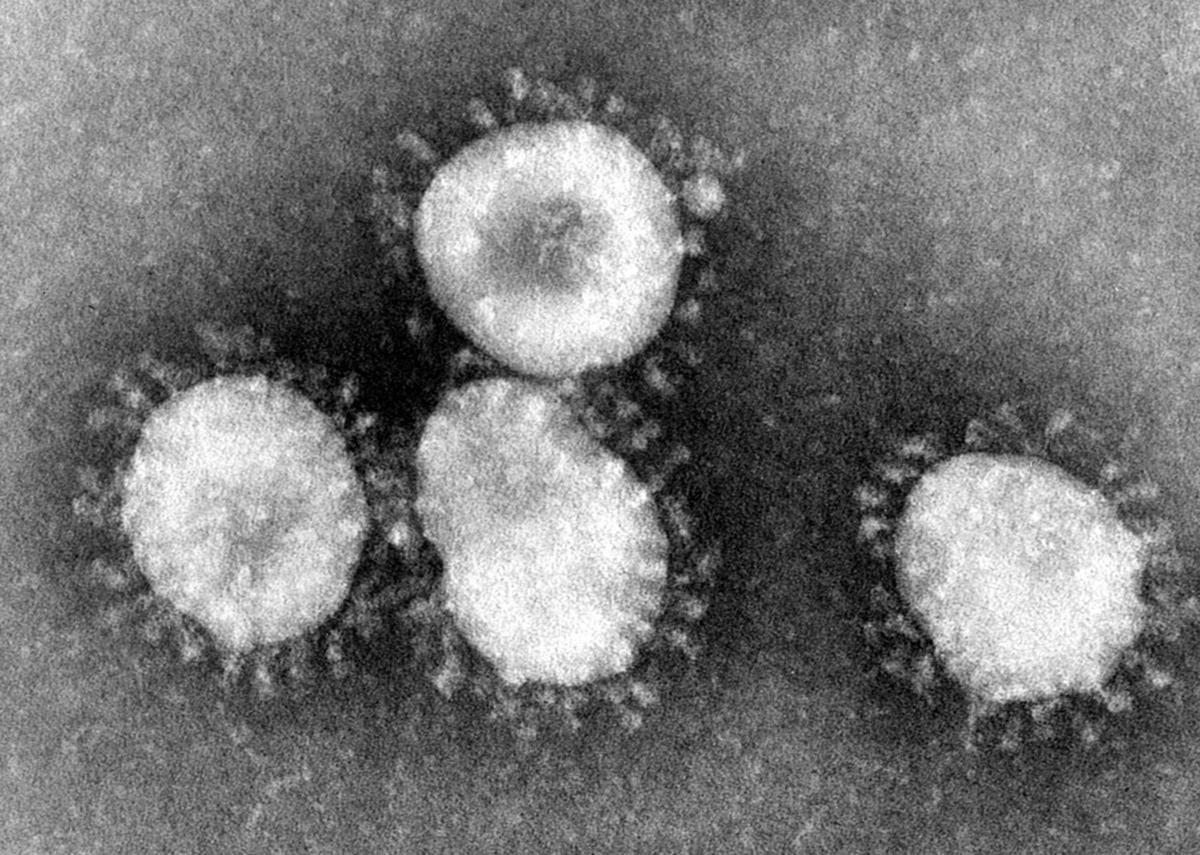
For far too long, the United States has been wastefully spending its precious budgetary resources on a nineteenth-century military strategy and a strategic arms policy that has brought no advantages to the American people. For the past three decades, our national security policies have been ineffectual and irrelevant to the genuine threats we face today. These threats do not emanate from Russia or China. Rather, they stem from an underfunded and highly vulnerable public health system, a cyber world that is out of control, and a crumbling infrastructure. In 2017, the American Society of Civil Engineers gave a grade of D-plus to the nation’s infrastructure, with the lowest grades going to roads, bridges, mass transit, and water management systems.
Coronavirus pandemic could delay licensing of nuclear waste facility near Carlsbad
New Mexico’s congresspeople called on the federal government to extend a public comment period for an environmental impact statement (EIS) on a proposal by Holtec International to build a nuclear waste repository in southeast New Mexico.
ADRIAN HEDDEN | currentargus.com
Gov. Chris Christie, Camden Mayor Dana Redd and other officials spoke about the international firm’s role in reviving the city during a Sept. 7 ribbon-cutting.The letter signed by U.S. Sens. Tom Udall and Martin Heinrich (D-NM) and U.S. Reps. Xochitl Torres Small, Ben Ray Lujan Deb Haaland (D-NM), urged the federal Nuclear Regulatory Commission (NRC) to extend the 60-day public comment period until public hearings could be held in New Mexico.
The request followed a State ban on gatherings of more than 10 people amid a global outbreak of coronavirus that left thousands dead across the world.
The comment period began Friday as the draft environmental impact statement was published in the Federal Register.
LANL set to release radioactive vapors
Los Alamos National Laboratory will release radioactive vapors into the atmosphere to ventilate several barrels of tritium-tainted waste generated during the Cold War. Jay Coghlan, executive director of Nuclear Watch New Mexico, said in the 1990s he won a lawsuit against the Energy Department for falsely claiming a building’s “shielding factor” kept radioactive emissions within federal limits.
“The undocumented assertion in the application that half of the tritium could remain behind in equipment should be viewed with suspicion,” Coghlan said.
ARTICLE BY: SCOTT WYLAND | santafenewmexican.com
The lab informed the U.S. Environmental Protection Agency earlier this month that it would ventilate four waste containers, beginning April 17, to relieve the built-up, radioactive hydrogen in the barrels’ headspace to prevent them from rupturing while they’re being handled. The EPA approved the application for the radioactive release last year.
Groups Request DOE Publish “Notice” of Release of Plutonium Bomb Document in Federal Register
“Request to Publish Notice of Draft Supplement Analysis in the Federal Register, DOE/EIS-0380-SA-06: Draft Supplement Analysis”
Public interest groups working for US DOE to fully comply with the National Environmental Policy Act (NEPA) in its unjustified plans to produce more plutonium “pits” for new and refurbished nuclear weapons have written to DOE concerning plans for expanded pit production at the Los Alamos National Lab in New Mexico. The lawyer for SRS Watch, Nuclear Watch New Mexico (Santa Fee, NM) and Tri-Valley CARES (Livermore, CA) wrote to DOE’s National Nuclear Security Administration (NNSA) on March 20, 2020, requesting that NNSA publish in the Federal Register a notice that a document on pit production was released on March 10, 2020 and, further, that it be opened for a 45-day comment period from the date of publication in the Federal Register.
The group letter is posted here: Request for Publication of Notice of Draft SA in Federal Register March 20 2020
Navy asks Lockheed Martin to build additional Trident II D5 submarine-launched ballistic nuclear missiles
The Trident II D5 is the primary U.S. sea-based nuclear ballistic missile, and is deployed aboard U.S. Navy Ohio-class ballistic missile submarines.
BY JOHN KELLER | tricityherald.com
WASHINGTON – Strategic weapons experts at Lockheed Martin Corp. will build additional UGM-133A Trident II D5 submarine-launched ballistic nuclear missiles and support deployed D5 nuclear weapons under terms of a half-billion-dollar order announced Thursday.
Undisclosed delays plague atomic programs, cost billions to fix
“The Trump administration wants $3.1 billion more this year than last for the Energy Department’s nuclear weapons budget, but internal government documents show the raise is devoted substantially to covering previously undisclosed cost overruns and avoiding years of new delays in the majority of U.S. atomic weapons programs.”
ARTICLE BY: JOHN M. DONNELLY | rollcall.com
UNITED STATES – MARCH 28: Lisa E. Gordon-Hagerty, under secretary for Nuclear Security and NNSA administrator, and Energy Secretary Rick Perry, testify during a Senate Armed Services Committee hearing titled “Department of Energy’s Atomic Energy Defense Programs,” in Dirksen Building on Thursday, March 28, 2019. (Photo By Tom Williams/CQ Roll Call)The new NNSA budget request is the latest example of the agency’s long-running problems
The Trump administration wants $3.1 billion more this year than last for the Energy Department’s nuclear weapons budget, but internal government documents show the raise is devoted substantially to covering previously undisclosed cost overruns and avoiding years of new delays in the majority of U.S. atomic weapons programs.
The administration has sold the 25 percent budget boost for the National Nuclear Security Administration only in broad terms as necessary to maintain America’s nuclear deterrent. However, the additional funds are needed not so much to advance capabilities as merely to keep troubled programs from falling further behind, according to the “official use only” correspondence obtained by CQ Roll Call.
U.S. Department of Energy to continue cleaning up New Mexico nuke sites
During the Cold War and Manhattan Project, Los Alamos National Laboratory in northern New Mexico was used to develop and test nuclear weapons, leaving behind a legacy of nuclear waste and environmental contamination.
ADRIAN HEDDEN | currentargus.com
For the next decade, the U.S. Department of Energy planned to continue disposing of nuclear waste at the Waste Isolation Pilot Plant near Carlsbad, while also improving infrastructure at the site and continuing clean-up efforts at nuclear facilities across New Mexico and the U.S.
In its 2020-2030 “Vision” released this month, the DOE’s Office of Environmental Management (EM) outlined plans for WIPP, and two other national laboratories it owns in New Mexico: Los Alamos (LANL) and Sandia (SNL) national laboratories.
WIPP is the nation’s only permanent repository for low-level transuranic (TRU) waste, which is permanently buried in an underground salt formation about 2,150 feet underground.
More Information on Tritium’s Significant Hazards
Routine Radioactive Releases from U.S. Nuclear Power Plants. An update to our comprehensive list and map of all operating U.S. reactors and where they release radioactivity into the air and water. Every nuclear power reactor dumps radioactive water, scatters radioactive particles, and disperses radioactive gases as part of its routine, everyday operation. It doesn’t take an accident. Federal regulations permit these radioactive releases. Any exposure to radiation increases the risk of damage to tissues, cells, DNA, and other vital molecules, potentially causing genetic mutations, cancers, leukemias, birth defects, and reproductive, cardiovascular, endocribe, and immune system disorders.
The pamphlet lists all reactors operating at the October 2015 press time. For an up to date track of reactors as they close, please visit our Reactors Are Closing page
[This pamphlet is broader than just tritium, but tritium plays a significant part. See especially the discussion of how hazardous even a couple of curies of hazardous radioactivity, badly handled, can be.]
Reports
Leak First, Fix Later: Uncontrolled and Unmonitored Radioactive Releases from Nuclear Power Plants
UPDATED!
Leak First, Fix Later: Uncontrolled and Unmonitored Radioactive Releases from Nuclear Power Plants. May 2015. Newly revised and updated from the original, Leak First is a Beyond Nuclear report on the persistent and ongoing leaking of radioactive effluent into ground and surface water from uninspected and unmaintained buried piping under every nuclear power plant.
UPDATED!
Executive Summary. May 2015.
Note: New leaks occur often and at multiple nuclear reactor sites. Watch this page for updates on new leaks and spills.
LANL waste is unearthed at housing site
A utility crew found hazardous waste buried on land the U.S. Energy Department had transferred to Los Alamos County, stalling work on an affordable housing project.
ARTICLE BY: SCOTT WYLAND | santafenewmexican.com
The discovery of low-level radioactive waste 7 to 12 feet in the ground off DP Road last month prompted the state Environment Department to write a letter that ordered the agency to supply more information about the waste, how it got there and how the agency planned to avoid future incidents.
The state agency is “extremely concerned” about the contamination unearthed on a former Los Alamos National Laboratory site and “the potential threat to human health and the environment,” wrote Kevin Pierard, the department’s Hazardous Waste Bureau chief, in a Feb. 28 letter.
Pierard demanded Energy Department and lab officials submit data on the site and the sources of contamination, as well as tests and investigations that were conducted.
“We are currently investigating and characterizing the waste located at the site to determine the extent of the contamination,” Energy Department managers wrote in response.
The waste was placed in three drums and moved to another site for further analysis, the Energy Department said. Crews have fenced off the construction site, covered it with tarp and posted signs to keep people out, the letter said.
Political Battle Brewing Over New Nuclear Program
“Congressional leadership has yet to receive the military requirement or justification for another new nuclear warhead,” a spokesperson for HASC Democrats said in an email.
“As recently as July 2019, the Department of Energy projected it would begin work on this warhead in 2023. Work on this new warhead will add billions of dollars to an already strained nuclear modernization plan.”
BY JON HARPER | nationaldefensemagazine.com
The Trump administration’s proposal to begin work on a new nuclear warhead program to modernize the nation’s aging stockpile is expected to be hotly contested.
For fiscal year 2021, President Donald Trump requested $28.9 billion for the Pentagon’s nuclear enterprise. He requested an additional $15.6 billion for efforts by the National Nuclear Security Administration, which manages the stockpile, including $53 million for NNSA work on a new warhead, dubbed the W93.
What is real national security? Comprehensive public health or more nuclear weapons?
Public Health as a National Security Concern
“Different perspectives on what “security” means compete for attention, and the literature that brings public health and national security together forces those in public health to contemplate these different perspectives and how they relate to the public health mission of protecting population health.” — Fidler, David P., “Public Health and National Security in the Global Age: Infectious Diseases, Bioterrorism, and Realpolitik”
Report: Nuclear waste cleanup efforts could be delayed
“It is shocking that DOE would propose to delay projects like the cesium-strontium capsules and the 324 Building contamination, which pose such great risks to the workers and public,” said Tom Carpenter, executive director for Hanford Challenge, a watchdog and worker advocacy group.
THE ASSOCIATED PRESS | sanluisobispo.com
The Department of Energy has announced priority plans for environmental cleanup nationwide and indicates a slower process for the decommissioned nuclear site in Washington state, a report said.
The focus at the Hanford Site will be to start treating waste at the $17 billion vitrification plant, but the report does not detail other work at the 580-square-mile (1,500-square-kilometer) site, the Tri-City Herald reported Tuesday.
The report does not mention moving radioactive capsules to safer storage and cleaning up a radioactive spill under one of the buildings a mile north of Richland.
ORIGINAL ARTICLE
9th Anniversary of Fukushima Daiichi Nuclear Disaster
Nine years have passed since the Great East Japan Earthquake and ensuing tsunami struck the Tohoku region on March 11, 2011, causing the disastrous accident at the TEPCO Daiichi nuclear power plant. The impacts of this nuclear disaster continue to this day.
We join together with people around the world to stand with the victims and continue working towards a peaceful world without nuclear power and nuclear weapons.
Public invited to comment on LANL impact statement
“NNSA [is] shutting the public out, while steamrolling exorbitantly expensive expanded pit production…There is a clear need for a nationwide programmatic environmental impact statement to justify or not expanded plutonium pit production, followed by a new site-wide environmental impact statement for Los Alamos,” — Jay Coghlan, Nuclear Watch New Mexico
BY T.S. LAST | abqjournal.com Copyright © 2020 Albuquerque Journal
SANTA FE – The National Nuclear Security Administration on Tuesday released its draft Supplement Analysis to the 2008 Site-wide Environmental Impact Statement for Los Alamos National Laboratory, concluding that it doesn’t have to complete an environmental impact statement.
The study examines whether environmental analysis for expanded plutonium pit production at LANL should be required under the National Environmental Policy Act.
“Based on analysis in this SA, NNSA preliminarily concludes that no further National Environmental Policy Act documentation for LANL at a site-specific level is required,” the document says. “However, NNSA will consider comments on this draft SA prior to publishing a final SA.”
“Proud to be an American?” What an American admiral forgets about nuclear war
“Today, all these years later, the Trump administration is much more focused on acquiring new nuclear weapons systems than constraining or eliminating them. And the White House seems all too eager to walk away from the treaties and tools that were built to reduce these weapons’ greatest risks.”
MONICA MONTGOMERY | thebulletin.org
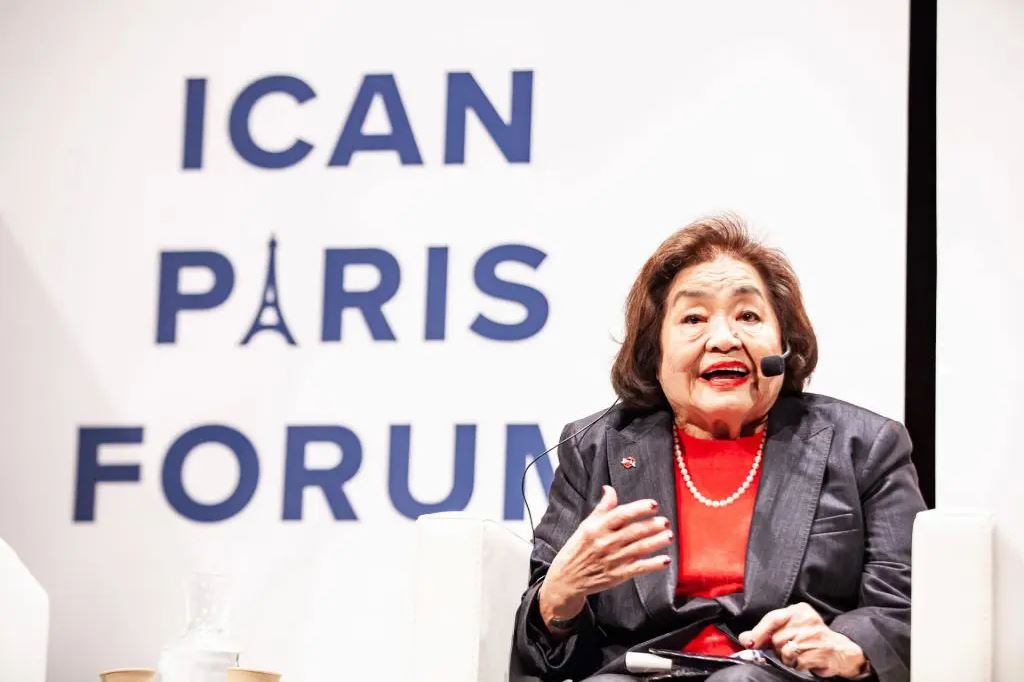
In late February, Adm. Charles Richard, head of US Strategic Command, told a House committee that the innovations going into a new nuclear warhead are what make him “proud to be an American.”
He was referring to the W93, a new nuclear warhead that will be used on submarine-launched ballistic missiles and that the Trump administration wants $53 million to start work on this year. While the design and timeline remain unclear, the administration forecasts that the price tag for developing and building this new weapon will reach over $1 billion per year in the next four years. The W93 would join or replace at least three other submarine-launched nuclear warheads that already exist and for which billions already have been and are still being spent to modernize.
Non-Proliferation Treaty turns 50 as US funds new nukes
“You can’t preach temperance from a bar stool, you can’t tell others not to have nuclear weapons when you’re busy ‘modernizing’ your own.”
ARTICLE BY: JAY COGHLAN / NUCLEAR WATCH NEW MEXICO | abqjournal.com
Thursday marked the 50th anniversary of the Non-Proliferation Treaty, whose central bargain was that non-nuclear weapons states forswore acquiring them in exchange for which nuclear weapons states promised to enter into serious negotiations leading to their elimination. Those negotiations have never happened.
The Trump Administration has marked the occasion by finally releasing the detailed fiscal year 2021 Congressional Budget Request for the Department of Energy’s semi-autonomous nuclear weapons agency, the National Nuclear Security Administration. The NNSA’s program for new and upgraded nuclear weapons gets a $3 billion-plus mark-up to $15.6 billion, slated to jump to $17 billion annually by 2025.
Sandia Labs may get $300 million budget increase
Meanwhile, “[Los Alamos] laboratory’s funding for the cleanup of radioactive waste it produced during the Manhattan Project and Cold War would decrease by $100 million.”
SCOTT TURNER | abqjournal.com Copyright © 2020 Albuquerque Journal
Sandia National Laboratories would receive a $300 million increase in federal funding under President Donald Trump’s proposed fiscal 2021 budget.
Most of the increase involves the labs’ nuclear weapons program, Sandia officials told the Journal.
Progressive lawmakers waging new NDAA fight
“This administration has no regard for Congress, and unless we put in very strict parameters around our funding support and our authorization, they’re just going to continue to roll all over us.” – Rep. Pramila Jayapal (D-Wash.), co-chair of the Congressional Progressive Caucus
Progressive House Democrats are eyeing a new push to roll their top agenda items into the National Defense Authorization Act this spring, Connor O’Brien reports, as they seek to seize on support for their legislation but also anxiety over Trump’s expansive war powers and his diversion of military funding for the border wall.
The left wing of the Democratic caucus is still smarting after feeling they got rolled on attempts to block a military confrontation with Iran, head off a shift in Pentagon funds toward the border wall, limit nuclear weapons spending, reverse restrictions on transgender troops and withdraw U.S. military support in Yemen’s civil war.
“They note that not long after last year’s bill failed to require Congress to sign off on war with Iran, repeal the 2002 Iraq war authorization and limit Trump’s ability to move money, Trump ordered the killing of a top Iranian commander and moved to sap billions more from the Pentagon’s coffers for the wall,” O’Brien reports.
The White House gave this nuclear agency a giant funding increase. Can it spend it all?
“The proposed $3.1 billion increase for weapons is simply sprinting toward failure, and Congress should right-size NNSA’s workload to match what the complex can realistically do,” – Rep. Marcy Kaptur, D-Ohio
ARTICLE BY: AARON MEHTA | defensenews.com
WASHINGTON — Members of Congress used a hearing Tuesday to question whether the National Nuclear Security Administration, a semiautonomous arm of the Department of Energy that handles development of nuclear warheads, can spend an almost 20 percent funding increase requested by the Trump administration.
Joint Declaration between the Anishinabek Nation and the Iroquois Caucus on the Transport and Abandonment of Radioactive Waste
Preamble
The Anishinabek Nation and Iroquois Caucus have renewed their relationship and commitment of unity by smoking the sacred pipe. The two nations have met to discuss radioactive waste matters that are within their traditional and treaty territories
Central to the discussions were ceremony, and spirituality, as reflected in our inherent responsibilities and intimate relationship to the land, waters, and all our relations.
We the Anishinabek Nation and Iroquois Caucus have jurisdiction over the Great Lakes and St. Lawrence River basins as a result of Aboriginal titles, and the treaties that have been entered into by First Nations and the Crown. We have our own territories and exercise our jurisdiction on a Nation-to-Nation basis.
Heinrich grills energy secretary on proposed $100M budget cut for LANL cleanup
“I can’t understand why this administration does not value cleanup and would risk breaking the legal commitments [the Department of Energy] has made to the state of New Mexico with budget numbers like that,” Heinrich said. “Why is the cleanup number so abysmal in this budget?”
ARTICLE BY: SCOTT WYLAND | santafenewmexican.com March 3, 2020
U.S. Sen. Martin Heinrich fired tough questions and caustic comments at Energy Secretary Dan Brouillette on Tuesday over the proposed $100 million cut in Los Alamos National Laboratory’s cleanup program for radioactive waste it produced during the Manhattan Project and Cold War.
Nuclear Tests Marked Life on Earth With a Radioactive Spike
Even as it disappears, the “bomb spike” is revealing the ways humans have reshaped the planet.
STORY BY: CARL ZIMMER | theatlantic.com
On the morning of March 1, 1954, a hydrogen bomb went off in the middle of the Pacific Ocean. John Clark was only 20 miles away when he issued the order, huddled with his crew inside a windowless concrete blockhouse on Bikini Atoll. But seconds went by, and all was silent. He wondered if the bomb had failed. Eventually, he radioed a Navy ship monitoring the test explosion.
“It’s a good one,” they told him.
Then the blockhouse began to lurch. At least one crew member got seasick—“landsick” might be the better descriptor. A minute later, when the bomb blast reached them, the walls creaked and water shot out of the bathroom pipes. And then, once more, nothing. Clark waited for another impact—perhaps a tidal wave—but after 15 minutes he decided it was safe for the crew to venture outside.
The mushroom cloud towered into the sky. The explosion, dubbed “Castle Bravo,” was the largest nuclear-weapons test up to that point. It was intended to try out the first hydrogen bomb ready to be dropped from a plane.
Senators ask government watchdog to assess NNSA’s nuclear weapons spending
Read the letter here
BY: COLIN DEMAREST | aikenstandard.com
The James Forrestal Building, the headquarters of the U.S. Department of Energy in Washington, D.C. / Staff photo by Colin DemarestTwo prominent Democratic senators have asked a congressional watchdog to examine the National Nuclear Security Administration’s nuclear weapons spending and related workload.
The request comes a little more than two weeks after President Donald Trump unveiled his fiscal year 2021 budget request, which included $19.8 billion for the semiautonomous U.S. Department of Energy agency, $15.6 billion of which is flagged for nuclear weapons work.
That’s 25.2% above the fiscal year 2020 enacted level.
“Questions about affordability are critical given the significant expansion in NNSA’s budget and activities,” U.S Sens. Dianne Feinstein of California and Ed Markey of Massachusetts wrote in their Feb. 27 letter to the Government Accountability Office.
“The GAO raised concerns in a 2017 report about the affordability of NNSA modernization efforts,” the letter also reads, “and NNSA’s budget and activities have expanded significantly since that time.”
The independent accountability office investigates and issues reports often, touching everything from agriculture and food to national defense and tax policy.
“Nuclear Nightmares – THE BOMB, Presidents, Generals, and the Secret History of Nuclear War”
https://www.nytimes.com/2020/01/28/books/review/the-bomb-fred-kaplan.html
THE BOMB
Presidents, Generals, and the Secret History of Nuclear War
By Fred Kaplan
Illustrated. 372 pp. Simon & Schuster.
GOP lawmaker accuses administration of ‘playing politics’ with Yucca Mountain reversal
“The Trump Administration again proposes to cut DOE’s budget — by 8 percent overall, and by an astounding 35 percent in non-defense programs. This will limit America’s future by drastically reducing or eliminating programs critical for meeting our future energy needs and assuring our security,” – Rep. Marcy Kaptur (D-Ohio), chairwoman of the Appropriations Committee’s subcommittee on Energy and Water Development
ARTICLE BY: RACHEL FRAZIN | thehill.com
© Cameron LancasterRepublican Rep. Dan Newhouse (Wash.) accused the Trump administration of “playing politics” on Thursday with its reversal on funding for a nuclear waste repository in Nevada.
“I can’t tell you how disappointed I was to see this administration playing politics with something as important as completing the permanent solution to our nation’s high-level nuclear waste,” Newhouse said during a hearing on the administration’s proposed Department of Energy (DOE) budget.
“This budget is … a total waste of resources and a distraction from solving this very important issue,” he added.
President Trump announced this month that he no longer supports funding the Yucca Mountain nuclear waste site, reversing his position on a controversial matter in a key state in November’s elections. The change was reflected in his budget proposal for fiscal year 2021.
Energy Secretary Dan Brouillette said during the hearing that the administration would not proceed with either licensing for Yucca Mountain or an interim storage facility.
“My understanding [is] under the Nuclear Waste Policy Act we are prohibited from starting construction on an interim facility, a federal facility,” Brouillette said.
Democrats also criticized the administration over cuts included in the budget proposal.
“The Trump Administration again proposes to cut DOE’s budget — by 8 percent overall, and by an astounding 35 percent in non-defense programs. This will limit America’s future by drastically reducing or eliminating programs critical for meeting our future energy needs and assuring our security,” said Rep. Marcy Kaptur (D-Ohio), chairwoman of the Appropriations Committee’s subcommittee on Energy and Water Development, in her opening statement.
“Your budget proposes deep and arbitrary cuts that threaten progress one one of our most pressing challenges and that is climate change. We can be a leader in exporting clean energy technologies, but not under your budget request,” Kaptur added later in the hearing.
In response, Brouillette said, “Renewable technologies are becoming somewhat mature in the marketplace, so for us to focus again on these technologies that are now commercially widely available seems to us to be inappropriate.”
Trump’s budget request would reduce spending significantly at several energy and environment-related agencies, including the energy department. Trump has consistently proposed cutting funding such agencies, and Congress has routinely ignored those proposals and instead increased funding.
NNSA should focus on cleanup
Before we break out the champagne, we should ask serious questions because budgets are more than just numbers on a page. They also tell us about priorities.
BY: RALPH HUTCHINSON | oakridger.com
U.S. Sen. Lamar Alexander (R-Tenn.), from left, and U.S. Rep. Chuck Fleischmann, (R-Tenn.) are pictured with Ashton Davies of the senator’s press office during a well-attended ceremony held in Oak Ridge, Tenn., on Nov. 20, 2017, to break ground on the construction of a new Mercury Treatment Facility to deal with runoff from the Y-12 site – Ben Pounds/The Oak Ridger
In an op-ed on Feb. 7, Lisa Gordon-Hagerty, the head of National Nuclear Security Administration, made her argument for the new Trump Administration’s Fiscal Year2021 budget request (“Modernizing our nuclear enterprise infrastructure to keep Americans safe”). In it she reminds us of the billions of dollars being spent here on nuclear weapons projects and celebrates the whopping 20% proposed increase for the NNSA system, including in Oak Ridge.
BOOM Goes the Budget as DOE Plans for Nuclear War: $4.6 Billion Target for Unjustified Plutonium Bomb Plant (PBP) at $R$
DOE Plans for $4.6 Billion Cost to Convert the Ill-Constructed MOX Plant into a Plutonium Bomb Plant (PBP) at Savannah River Site by 2026-2030; Money to be Spent on Top of $8 Billion Wasted on MOX
BY: TOM CLEMENTS | srswatch.org
Plan to Seek $442 Million for PBP in Fiscal Year 2021 Confirmed in Feb. 26 Budget Document
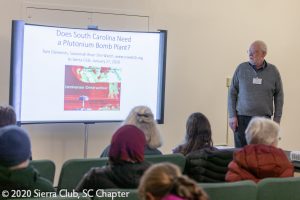 Columbia, South Carolina – A budget document released by the U.S. Department of Energy late on Wednesday, February 26 reveals that the agency has assumed a stunning projected cost of $4.6 billion to convert the poorly constructed plutonium fuel (MOX) building at the Savannah River Site into a Plutonium Bomb Plant (PBP). This amount of spending reveals that DOE and contractors aim to repurpose the failed MOX project into a perpetual money machine, according to the public interest group Savannah River Site Watch.
Columbia, South Carolina – A budget document released by the U.S. Department of Energy late on Wednesday, February 26 reveals that the agency has assumed a stunning projected cost of $4.6 billion to convert the poorly constructed plutonium fuel (MOX) building at the Savannah River Site into a Plutonium Bomb Plant (PBP). This amount of spending reveals that DOE and contractors aim to repurpose the failed MOX project into a perpetual money machine, according to the public interest group Savannah River Site Watch.
The budget document, the National Nuclear Security Administration’s funding request to Congress for Fiscal Year 2021, confirms that the agency is seeking $441 million for “repurposing” the MOX building into the unjustified Plutonium Bomb Plant.
US wants new nuclear weapons to counter Russia but says there is no arms race
Defense Department has pushed back on the notion that the US is engaging in an arms race or growing its nuclear arsenal, saying its latest moves are merely a response to Russian efforts
BY: RYAN BROWNE | cnn.com
Washington (CNN) During a visit to US Strategic Command last week, Secretary of Defense Mark Esper oversaw a “table top” war game exercise where Russian military forces used a “tactical” nuclear weapon against NATO territory during a conflict in Europe, prompting the US to launch a retaliatory nuclear strike.
“The scenario included a European contingency where you are conducting a war with Russia and Russia decides to use a low yield limited nuclear weapon against a site on NATO territory and then you go through the conversation that you would have with the Secretary of Defense and the President ultimately, to decide how to respond,” a senior Department of Defense official told reporters Friday.
Requested NNSA FY 2021 Funding for “Primary Capability Modernization”
(i.e. plutonium pits)
Bottom line: The National Nuclear Security Administration (NNSA) has requested $1.58 billion for expanded plutonium pit production in FY 2021 alone, when at least 15,000 pits are already stored at the Pantex Plant and independent experts have concluded that pits last at least a century (the average age now of pits in the active stockpile is less than 40 years). NNSA’s request is more than doubled from $712.4 million in FY 2020 for the comparable program “Plutonium Sustainment” that preceded Primary Capability Modernization.
No plutonium pit production is scheduled to maintain the safety and reliability of the existing stockpile. Instead, future pits will likely be heavily modified from tested designs for use in speculative new-design nuclear weapons. This could raise reliability issues and/or prompt the US to resume full-scale nuclear weapons testing.
Inside America’s newly revealed nuclear ballistic missile warhead of the future
“NNSA already has too much work on its plate to sustain. Accelerating development of yet another excessively ambitious program will only make that problem worse,” – Kingston Reif of the Arms Control Association
BY: AARON MEHTA | defensenews.com
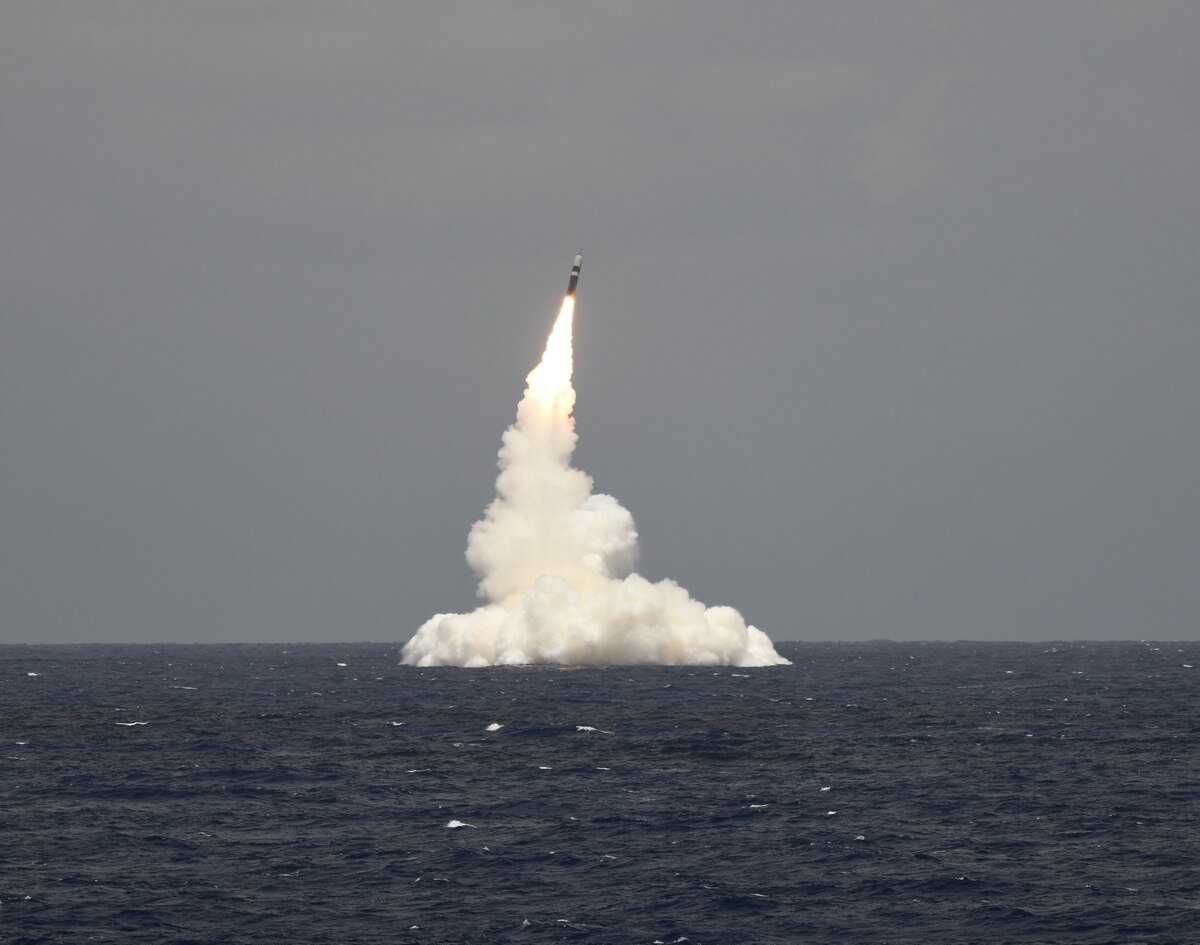
MINOT AIR FORCE BASE, N.D. — When the Trump administration’s budget request rolled out Feb. 10, eyebrows shot up within the nuclear community at the mention of a previously unknown warhead, listed in documents as the W93.
Now the Pentagon is revealing details about the weapon, what it will replace and when it might be deployed.
The labeling of the warhead as the W93 is important. Since the introduction of the W88 in the 1980s, all upgrades to warheads have been described as variants — for instance, the collapsing of several versions of the B61 gravity bomb into the B61-12. According to a senior defense official, the reason for the new designation comes from the reality that the warhead is largely a new design.
Feinstein, Colleagues to DOD: ‘Low-Yield’ Nuclear Weapons Not a Deterrent
PRESS RELEASE | feinstein.senate.gov
Washington—Senators Dianne Feinstein (D-Calif.), Patrick Leahy (D-Vt.), Bernie Sanders (I-Vt.), Tammy Baldwin (D-Wis.) and Elizabeth Warren (D-Mass.) today wrote to Defense Secretary Mark Esper questioning the decision to begin fielding W76-2 “low-yield” nuclear submarine-launched ballistic missile warheads.
“We write to express our concern about the recent decision to begin fielding the W76-2 low-yield nuclear submarine-launched ballistic missile warhead, a decision we do not support,” wrote the senators.
“It is inconsistent for the United States to begin fielding new nuclear weapons while we urge other countries not to do so. We should be focusing on diplomatic solutions, and we ask that you urge President Trump to extend New START before it expires next year in order to begin negotiating a successor treaty that addresses U.S. security needs.”
Full text of the letter is available here and below.
Senators Introduce Legislation to Counteract Trump Exit from Iran Deal
Iran Diplomacy Act calls for a diplomatic resolution to Iran’s nuclear program
PRESS RELEASE | markey.senate.gov
Washington (February 19, 2020) – Senators Edward J. Markey (D-Mass.), Dianne Feinstein (D-Calif.), Chris Van Hollen (D-Md.), Tammy Duckworth (D-Ill.), Bernie Sanders (I-Vt.), and Elizabeth Warren (D-Mass.) have introduced S.3314, the Iran Diplomacy Act, which calls upon the United States and Iran to return to no less than their commitments under the 2015 Joint Comprehensive Plan of Action (JCPOA), also known as the Iran nuclear deal. On January 14, 2020, France, Germany, and the United Kingdom triggered the JCPOA’s Dispute Resolution Mechanism in an attempt to address Iran’s breaches of the agreement, all of which followed the Trump administration’s unilateral exit from the deal on May 8, 2018.
Holes found in protective liner at SC nuclear fuel factory
Inspectors at the Westinghouse nuclear fuel factory near Columbia recently found 13 small leaks in a protective liner that is supposed to keep pollution from dripping into soil and groundwater below the plant.
ARTICLE BY SAMMY FRETWELL | thestate.com
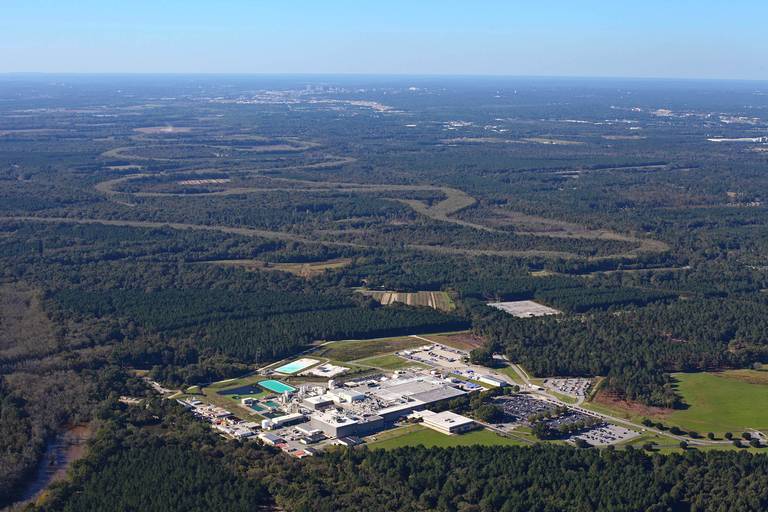
Now, the company plans to check a concrete floor beneath the liner, as well as soil below the plant, for signs of contamination that could have resulted from the tears, which were characterized in a federal inspection report as ‘’pinhole leaks.’’ The pinhole leaks, discovered by Westinghouse late in 2019, may have formed after company employees walked across the liner and weakened it, according to the U.S. Nuclear Regulatory Commission.
Delegation should support strong review of pit production
“”Awkward” was how a recent article by the Associated Press appropriately described the position of New Mexico’s liberal congressional delegation when it comes to environmental review of plans to ramp up production of plutonium “pits” at Los Alamos National Laboratory.”
Journal North Editorial Board, The Albuquerque Journal | February 16th, 2020 abqjournal.com
Production of plutonium pits, the triggers for nuclear weapons, is expected to resume at LANL, with a goal of making as many as 80 pits a year by 2030.
“Awkward” was how a recent article by the Associated Press appropriately described the position of New Mexico’s liberal congressional delegation when it comes to environmental review of plans to ramp up production of plutonium “pits” at Los Alamos National Laboratory.
Our Democratic elected officials in Congress are all, to varying degrees, considered strong supporters of environmental causes. On LANL, which produces radioactive waste and will produce much more when it starts making the grapefruit-sized cores of nuclear weapons on a grand scale over the next decade, they’ve walked something of a tightrope.
They want the billions of dollars in spending and the jobs that come with making pits for a historic (and historically expensive) upgrade of the nation’s nuclear weapons arsenal. They’ve even fought the idea of LANL having to share pit production with another national lab in South Carolina. They want all of the pits to be made in New Mexico.Continue reading
Proposed budget calls for $100 million cut in LANL cleanup
“To have a 46 percent cut in Los Alamos cleanup is stunning,” said Jay Coghlan, executive director of Nuclear Watch New Mexico. “We’ve got nuclear weapons on steroids and cleanup is the poor stepchild subject to the whims of DOE.”
BY: Scott Wyland swyland@sfnewmexican.com Feb 13, 2020 | Santa Fe New Mexican
Los Alamos National Laboratory’s long-term environmental cleanup program would be cut by $100 million under the U.S. Energy Department’s proposed budget for 2021.
The agency’s preliminary “budget in brief” shows a proposed 46 percent reduction in funding for the lab’s environmental management, which handles cleanup of legacy waste generated before 1999, including during the Manhattan Project and Cold War.
A mile-long, highly toxic chromium plume under the Sandia and Mortandad canyons and the massive radioactive waste buried in Area G are the results of shoddy disposal that occurred around the lab before environmental regulations were enacted in the 1970s.
Meanwhile, the Energy Department wants to increase spending by 25 percent on nuclear weapons to help meet the Trump administration’s goal of having LANL and Savannah River Site in South Carolina produce a combined 80 plutonium pits a year by 2030.
Nuclear waste site near Carlsbad opposed by New Mexico House committee vote
“These wastes are going to last for millions and millions of years. They are extremely toxic. The idea is to dispose of these in an area where there are gas and mineral resources. This is really not what New Mexico needs.” – Dave McCoy with Citizen Action New Mexico
ARTICLE BY: ADRIAN HEDDEN | currentargus.com
Legislation to oppose the transportation and storage of high-level nuclear waste in New Mexico cleared a State House committee as Holtec International continues to develop a plan to store such waste at a proposed facility near the Eddy-Lea county line.
House Memorial 21 was introduced by New Mexico Rep. Matthew McQueen (D-50) intended to prevent the controversial proposal that could see up to 100,000 metric tons of spent nuclear fuel rods stored on a temporary basis at the site in southeast New Mexico for at least 40 years.
The Trump Administration’s FY 2021 Request for the National Nuclear Security Administration
The Trump Administration is proposing a massive funding increase for the Department of Energy’s National Nuclear Security Administration (NNSA). At $19.8 billion, the request increases current NNSA funding by $3.1 billion, or 18.4 percent.
Article originally from taxpayer.net
NNSA funds all the Pentagon’s nuclear weapons-related activities, including weapons design, production, safeguarding the nation’s nuclear stockpile and clean-up of the government’s nuclear weapons sites. The NNSA budget does not fund the aircraft, submarines and missiles that make up the military’s nuclear “triad,” which are funded within the Pentagon’s annual budget.
In the FY 2021 request, the Department of Energy states that the additional NNSA funding is necessary to support the modernization efforts of U.S. nuclear forces called for in the 2018 Nuclear Posture Review.
Trump Proposes 25 Percent Bump in Nuke Spending
“Taxpayers in 2020 should not be forced to pay for a ticket back to nuclear weapons policies of the 1980s,” John Tierney, executive director of the Center for Arms Control and Non-Proliferation, said in a statement. Pit production funding wasn’t included in the overview. Energy Department officials said a full budget proposal would become available in the coming weeks.
“Globally, Trump’s nuclear weapons budget is fueling a new nuclear arms weapons race, particularly with a new plan for a new nuclear warhead,” said Jay Coghlan, executive director of New Mexico Nuclear Watch. “It solidifies Los Alamos lab’s future as a nuclear bomb plant, especially while nonproliferation, renewable energy and cleanup programs are held flat or cut.”
BY: SCOTT WYLAND |santafenewmexican.com
President Donald Trump is proposing a 25 percent increase in nuclear weapons spending that will include developing a new warhead for submarine-launched ballistic missiles, according to a preliminary 2021 budget overview released Monday.
The National Nuclear Security Administration, a semi-autonomous branch of the U.S. Energy Department, would see its budget increase by 18.4 percent to $19.8 billion next fiscal year, partly to ramp up production of plutonium pits at Los Alamos National Laboratory and Savannah River Site in South Carolina.
President’s Budget Calls for More Spending on Nuclear Production
Jay Coghlan of Nuclear Watch New Mexico, says that the budget request would allocate more taxpayer dollars to the country’s nuclear weapons programs since the Cold War ended 30 years ago.
“Globally Trump’s nuclear weapons budget is fueling a new nuclear arms race,” he said in a statement. “It solidifies Los Alamos Lab’s future as a nuclear bomb plant, while nonproliferation, renewable energy and cleanup programs are held flat or cut.”
BY: T.S. LAST |abqjournal.com
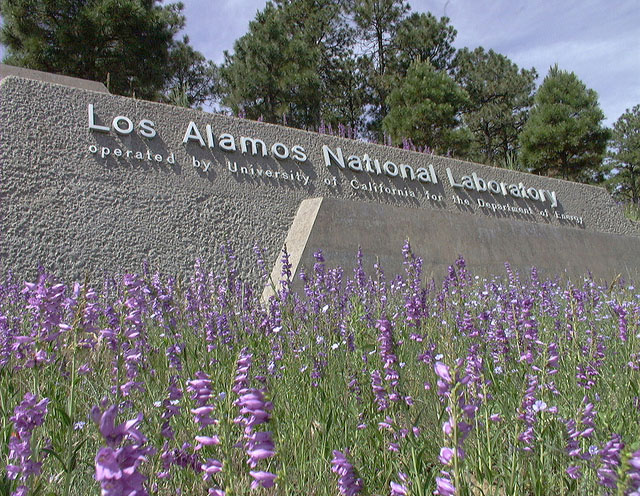
SANTA FE, N.M. — The National Nuclear Security Administration would get $19.8 billion under President Trump’s budget request for fiscal year 2021 — a 20% increase from this year’s budget — about half of which would go toward supporting the U.S.’s nuclear weapons programs.
According to a Department of Energy fact sheet distributed on Monday, $9.5 billion of NNSA’s budget would be put toward efforts to “sustain and modernize the U.S. nuclear stockpile.” Of that, $4.3 billion is earmarked for stockpile management and $2.5 billion is for production modernization to support production capabilities for nuclear weapons. That includes funds for equipment, facilities and personnel “to reestablish the Nation’s ability to produce (plutonium) pits.”
Trump Budget Calls for New Nuclear Warheads and 2 Types of Missiles
The president’s spending proposal requests money for a new arms race with Russia and China, and restores nuclear weapons as central to military policy.
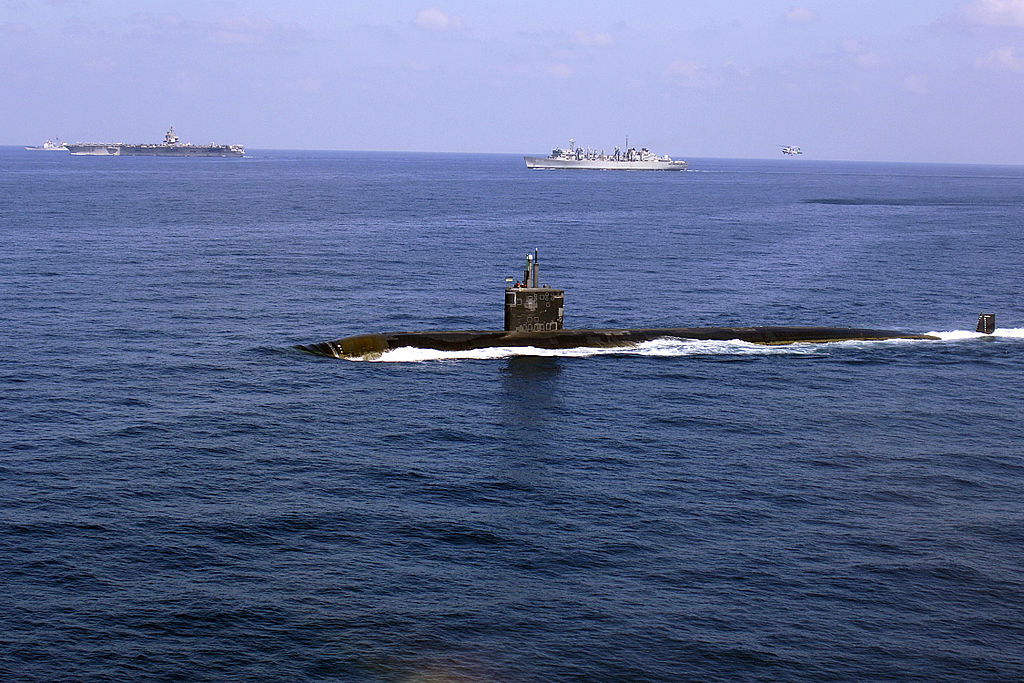
WASHINGTON — The Trump administration has begun to put a price tag on its growing arms race with Russia and China, and the early numbers indicate that restoring nuclear weapons to a central role in American military strategy will cost tens of billions of dollars over the next decade.
In the 2021 budget released on Monday, the administration revealed for the first time that it intended to create a new submarine-launched nuclear warhead, named the W93. Its development is part of a proposed 19 percent increase this year, to $19.8 billion, for the National Nuclear Security Administration, the Energy Department agency that maintains the nuclear stockpile and develops new nuclear warheads. More tellingly, that is a jump of more than 50 percent since 2017, President Trump’s first year in office.
Report: Triad had serious deficiencies in first year running Los Alamos lab
This article from the Santa Fe New Mexican is based on NNSA’s annual Performance Evaluation Reports (PERs) on contractor performance at its 8 nuclear weapons sites. NukeWatch New Mexico successfully sued in 2012 to get these reports publicly released. However, NNSA is now releasing only 3-page summaries, citing security concerns to at least one reporter. This is a baseless excuse given there has never been anything classified in the PERs.
“The federal evaluation points to Triad’s repeated breakdowns in oversight and safety issues while declaring that the contractor’s so-called accomplishments only slightly outweighed these chronic issues,” Jay Coghlan, executive director of Nuclear Watch New Mexico, said in a statement. “A rating of ‘good’ is simply not good enough as the lab aggressively expands the production of radioactive plutonium bomb cores for the new nuclear arms race,”
BY: SCOTT WYLAND | santafenewmexican.com
The consortium of nonprofits that operates Los Alamos National Laboratory struggled with safety, security and waste-management problems during the first year of its contract, including the accidental release of highly flammable cesium that required a multimillion-dollar cleanup, said an annual federal report card.
Putin wants to extend arms control. What’s Trump waiting for?
“Arms control takes political willpower. Binding and verifiable treaties are worth the effort. The weapons themselves are as cataclysmic in their power as ever. Have we lost the willpower to keep them in check?”
EDITORIAL BOARD | washingtonpost.com
The clock is ticking toward expiration of the last major nuclear arms control treaty, New Start, which will end a year from now if not extended by the United States and Russia. Should it lapse, the path will be open to another dangerous arms race, hardly what the world needs. Right now, all signs are pointing in the wrong direction.
WIPP Notes Need for Infrastructure Upgrades
DOE hopes to ramp up shipments of nuclear waste to NM repository
BY: ADRIAN HEDDEN | abqjournal.com
Officials from the U.S. Department of Energy are hoping to ramp up shipments of nuclear waste to the Waste Isolation Pilot Plant near Carlsbad to about 17 per week by 2023. The facility is currently accepting about 10 per week. To meet the goal of increasing shipments, Acting Manager of the DOE’s Carlsbad Field Office Greg Sosson said numerous ongoing infrastructure upgrades at the facility were needed.
“Infrastructure ages. We understand we have a lot more waste stream we’re going to tackle,” Sosson said. “These are really good projects to make sure WIPP is sustainable in the future so we can perform our important mission.”
Sosson, at Monday’s annual WIPP Legislative Breakfast in Santa Fe, said officials plan on WIPP accepting up to 350 shipments of transuranic nuclear waste in the next year from numerous DOE facilities, including 80 from Los Alamos National Laboratory and 195 from Idaho National Laboratory.
But to continue to accept waste at an increasing pace, Sosson said the facility must solve its airflow problem.
Nuclear News Archives – 2019
‘Trump Could Hardly Have Chosen a Worse Moment’
In a DER SPIEGEL interview, German Foreign Minister Heiko Maas laments America’s rejection of multilateralism and says that Donald Trump does not view the U.S. as the leading power among liberal democracies. He’s hoping to save the INF.
Interview by CHRISTIANE HOFFMAN and CHRISTOPH SCHULT | spiegel.de
DER SPIEGEL: Mr. Minister, United States President Donald Trump has turned against a global order based on international rules and agreements. In response, you called for the creation of an “Alliance of Multilateralists” last summer. How is that alliance coming along?
Maas: It’s growing. Many countries are seriously concerned that the principle of might makes right is once again being applied internationally.
Donald Trump’s Space Missile Plan Is Too Expensive and Will Not Work, Just Like His Border Wall, Experts Say
President Donald Trump’s new global missile defense plan would be too expensive and technologically taxing to effectively implement, leading experts have said.
The president unveiled his 2019 Missile Defense Review, the first of its kind since 2010, during an address Thursday at the Pentagon. He pledged to virtually eliminate any external threat to the United States, vowing to “to ensure that we can detect and destroy any missile launched against the United States anywhere, anytime.”
Commenting on this statement specifically, Ploughshares Fund think tank director Joseph Cirincione said during a press call that this “is simple to say, impossible to do.”
“If you liked the president’s border wall, wait until you see his space wall,” Cirincione, who also served as a professional staff member of House Armed Services Committee and Government Operations Committee responsible for congressional oversight of missile defense programs in the 1980s and early 1990s, added. “This is a complete fantasy.”
Advocacy Groups Go to Court to Stop WIPP Waste Volume Accounting Change
“Rather than pursuing the permit modification, the Department of Energy should comply with the legal capacity limit and begin a public process to explain what additional waste it wants to bring to WIPP and how it intends to address the loss of disposal space that cannot be used because of the significant underground contamination,” said Scott Kovac, operations and research director of NukeWatch.
BY: WAYNE BARBER
Two advocacy groups in New Mexico filed a legal appeal Thursday seeking to undo a New Mexico Environment Department order that allows the Energy Department to change the way it records underground transuranic waste volume at its Waste Isolation Pilot Plant (WIPP) near Carlsbad.
The Southwest Research and Information Center (SRIC) and Nuclear Watch New Mexico (NWNM) filed their notice of appeal in the New Mexico Court of Appeals to block the modification to WIPP’s state hazardous waste permit.
While it technically takes effect this month, as a practical matter the new counting system won’t be instituted right away because DOE has not drafted its policy on implementation, said SRIC Administrator Don Hancock by email.
A Dec. 21 order from then-state Environment Department Secretary Butch Tongate authorized DOE to stop recording empty spaces between container drums as waste. The order adopted the findings of state Hearing Officer Max Shepherd, who recommended waste volume counted against the disposal cap set by the 1992 WIPP Land Withdrawal Act should cover only the actual waste inside containers.
Appeal Targets Permit Change for US Nuclear Repository
By Associated Press | Thursday, January 17th, 2019 at 12:33pm
ALBUQUERQUE, N.M. — Watchdog groups are appealing a recent permit change approval by New Mexico regulators that could ultimately allow for more waste to be placed at the U.S. government’s only underground nuclear waste repository.
The approval by the state Environment Department came in the final days of former Gov. Susana Martinez’s administration. The change was requested earlier by the U.S. Energy Department and the contractor that operates the Waste Isolation Pilot Plant.
The permit modification changes the way the volume of waste is calculated. Specifically, it excludes the empty space inside waste packaging containers.
The Southwest Research and Information Center and Nuclear Watch New Mexico argue the modification is unlawful.
Critics also are concerned the change could be a first step in expanding the repository’s mission to hold other kinds of waste.
Smith Statement on Trump Missile Defense Review
Washington, DC – Today, House Armed Services Committee Chairman Adam Smith (D-WA) released the following statement about the Trump administration’s Missile Defense Review:
“The missile defense policy of the United States must follow some key principles.”
“First, it is essential that we ensure we are spending money on programs that are reliable and rigorously tested before they are deployed. We need to know that we are putting scarce taxpayer dollars to good use, for example improving reliability of the current system, rather than rushing to buy and deploy unproven missile defense systems. It is common sense to insist on this principle when it comes to programs that protect the American people and our allies, particularly in the context of the growing North Korea threat.
“Second, we must avoid missile defense policies that will fuel a nuclear arms race. Strategic stability is an essential component of U.S. national security, and it does not serve our long-term interest to take steps that incentivize Russia and China to increase the number and capability of their nuclear weapons.
“While it is essential that we continue investing in proven missile defense efforts, I am concerned that this missile defense review could lead to greater investment in areas that do not follow these principles, such as a space-based interceptor layer that has been studied repeatedly and found to be technologically challenging and prohibitively expensive.
“Moreover, we must consider missile defense and effective arms control policy as part of our deterrence capabilities. I am gravely concerned about President Trump’s broader strategy to withdraw us from international arms control agreements, dismiss allies, and expand the role of nuclear weapons in U.S. defense policy, which could further siphon funding from much-needed budget priorities and exacerbate a new nuclear arms race.”
armscontrol.org | January 17th, 2019
The Trump administration’s long-awaited Missile Defense Review, which was released today, proposes a significant and costly expansion of the role and scope of U.S. missile defenses that is likely to exacerbate Russian and Chinese concerns about the threat to their strategic nuclear deterrents, undermine strategic stability, and further complicate the prospects for additional nuclear arms reductions.
Of particular concern was President Donald Trump’s statement during his remarks at the Pentagon that the goal of U.S. missile defenses is to “ensure we can detect and destroy any missile launched against the United States anywhere, anytime, anyplace.” This would be a costly, unachievable, and destabilizing departure from longstanding policy and contradicts the text of the review, which limits U.S. homeland missiles defense to their traditional role of defending against limited attacks from North Korea or Iran. Continue reading
US to Begin INF Treaty Pullout Next Month After Russia Missile Talks Fail
Officials reject Russian offer to inspect new missile; US says it will suspend observance of treaty on 2 February.
By JULIAN BORGER in Washington theguardian.com | Wed 16 Jan 2019 18.29 EST
Sergei Lavrov, Russia’s foreign minister, accused the US of intransigence.Photograph: Pavel Golovkin/AP
The US has rejected Moscow’s offer to inspect a new Russian missile suspected of violating a key cold-war era treaty, and warned that it would suspend observance of the treaty on 2 February, giving six-month notice of a complete withdrawal.
The under-secretary of state for arms control and international security, Andrea Thompson, confirmed the US intention to withdraw from the treaty after a meeting with a Russian delegation in Geneva, which both sides described as a failure.
Nuclear arms treaty faces collapse after failed US-Russia talks
By BEN SIMON/ AP channelnewsasia.com
Geneva (AFP) – The survival of a key nuclear arms control treaty was cast further in doubt Tuesday after the US and Russia blamed each other for pushing the agreement to the brink of collapse.
Senior diplomats from both countries met in Geneva amid widespread concern over the fate of the bilateral Intermediate-Range Nuclear Forces Treaty, which successfully put an end to a mini-arms race after it was signed in 1987.
US President Donald Trump said in October that his country would pull out of the deal unless Russia stops violating it. Russian President Vladimir Putin has threatened to develop nuclear missiles banned under the treaty if it is scrapped.
Permit Changes at WIPP Face Challenges
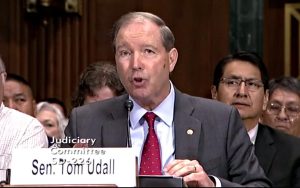
By Mark Oswald | Journal Staff Writer
abqjournal.com | Sunday, January 13th, 2019 at 12:01am
U.S. Sen. Tom Udall is encouraging Gov. Michelle Lujan Grisham’s new administration to reconsider a state government decision made just before she took office Jan. 1 that changes how radioactive waste volume is measured at the Waste Isolation Pilot Plant, in effect allowing more waste to placed in the underground repository near Carlsbad.
Udall said last week that limits on how much waste WIPP can hold were critical to federal-state negotiations that led to WIPP’s creation “and were a major reason New Mexico agreed to this mission in the first place.”
“I am encouraging the new administration to take a hard look at this action, and hopeful that it will pause and reconsider this last-minute change that has major ramifications for our state,” the senator said in an email statement.
The controversial state permit modification for WIPP, approved by then-New Mexico Environment Department Secretary Butch Tongate on Dec. 21, changes the way waste volume is calculated to exclude empty space inside waste packaging. With the alteration, WIPP becomes only about a third full instead of 50 percent full.
Continue reading
More Nuclear Waste Coming to New Mexico
Albuquerque Journal
By Mark Oswald / Journal Staff Writer
Sunday, January 13th, 2019 at 12:01am
U.S. Sen. Tom Udall is encouraging Gov. Michelle Lujan Grisham’s new administration to reconsider a state government decision made just before she took office Jan. 1 that changes how radioactive waste volume is measured at the Waste Isolation Pilot Plant, in effect allowing more waste to placed in the underground repository near Carlsbad.
Udall said last week that limits on how much waste WIPP can hold were critical to federal-state negotiations that led to WIPP’s creation “and were a major reason New Mexico agreed to this mission in the first place.”
An inspector monitors radiations around containers at Los Alamos National Laboratory in 2003 prior to shipping nuclear waste to the Waste Isolation Pilot Plant near Carlsbad. New Mexican file photo; Drums of transuranic waste are stored inside a salt cavern at the Waste Isolation Pilot Plant in Carlsbad in 2006. Los Angeles Times file photo
By Rebecca Moss rmoss@sfnewmexican.com
santafenewmexican.com | Jan 5, 2019 Updated Jan 6, 2019
In the final days of Republican Gov. Susana Martinez's administration, the state Environment Department approved a controversial change to how federal officials measure the amount of nuclear waste buried some 2,000 feet underground in Southern New Mexico salt beds.
Proponents of the change say it merely clarifies that the storage site will measure the actual volume of transuranic waste deposited there rather than the volume of the massive exterior waste drums, called overpack containers — and the air inside. But critics say the result will be an increase in the quantity of material stored at the U.S. Department of Energy's Waste Isolation Pilot Plant near Carlsbad.
Several nuclear watchdog groups, which say they intend to appeal the decision, also fear the change in WIPP's hazardous waste permit from the state could open the door to allowing high-level nuclear waste to be brought into New Mexico.
Jon Kyl Voted for New Nukes After Taking Payments From Nuclear Company
The senator-turned-lobbyist-turned-senator-turned-lobbyist had a paid board seat at one nuclear company and lobbied for two others. Then he joined the Senate.
WASHINGTON, DC – SEPTEMBER 05: U.S. Sen. John Kyl (R-AZ) awaits Vice President Mike Pence before a mock swear-in ceremony on September 5, 2018 in Washington, DC. The former senator Kyl was tapped by Arizona Gov. Doug Ducey to replace the late Sen. John McCain. (Photo by Zach Gibson/Getty Images)By Alex Kotch readsludge.com | JAN 10, 2019 4:10PM EST
After almost 30 years of a program to clean up dangerous defense waste at the Hanford nuclear site in southeastern Washington, the Department of Energy now wants to change the rules to make the job easier and save money. If approved, the proposal poses new dangers to the health and safety of people and the environment — not just in southeastern Washington, but at nuclear sites around the country.
After Sen. John McCain’s death in August 2018, Arizona Gov. Doug Ducey appointed former Republican Senator Jon Kyl to replace him—despite Kyl having spent years lobbying his former colleagues for an array of defense, utility, nuclear, tech, and social media companies that have business before the chamber. Government watchdogs warned of potential ethics issues, but Kyl was allowed to step aside from his K Street job and work on legislation without acknowledging conflicts of interest or recusing himself.
News broke on Monday that Kyl is rejoining his previous employer, lobbying firm Covington & Burling, after his four-month stint in the Senate.
Renew Nuclear Arms Control, Don’t Destroy It
By Andrew Lichterman and John Burroughs
Andrew Lichterman is Senior Research Analyst for Western States Legal Foundation, based in Oakland, California. John Burroughs is Executive Director of Lawyers Committee on Nuclear Policy, based in New York City.
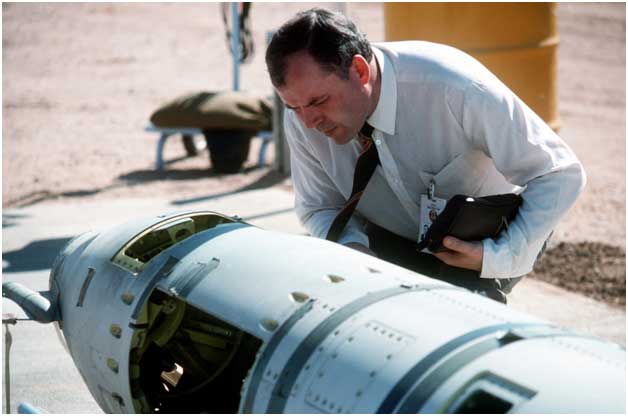
ipsnews.net | NEW YORK, Jan 2 2019 (IPS)
A hard-earned lesson of the Cold War is that arms control reduces the risk of nuclear war by limiting dangerous deployments and, even more important, by creating channels of communication and understanding. But President Donald Trump and his National Security Advisor John Bolton appear to have forgotten, or never learned, that lesson.
In late October, Trump announced an intent to withdraw from the Intermediate-Range Nuclear Forces (INF) Treaty. Secretary of State Mike Pompeo subsequently stated that the US will suspend implementation of the treaty in early February. While US signals have been mixed, initiation of withdrawal at that point or soon thereafter appears likely.
Don’t let feds change the rules for cleaning up Hanford nuclear waste
The public can comment on the U.S. Department of Energy’s proposed changes to Hanford nuclear waste cleanup rules until Jan. 9.
A sign warns of high levels of radiation near a valve at the “C” tank farm of the Hanford Nuclear Reservation near Richland. (AP Photo / Ted S. Warren, 2014)By Tom Carpenter
NukeWatch NM and Hanford Challenge are both members of the Alliance for Nuclear Accountability.
seattletimes.com | Originally published January 2, 2019 at 3:11 pm
After almost 30 years of a program to clean up dangerous defense waste at the Hanford nuclear site in southeastern Washington, the Department of Energy now wants to change the rules to make the job easier and save money. If approved, the proposal poses new dangers to the health and safety of people and the environment — not just in southeastern Washington, but at nuclear sites around the country.
In 1943, the U.S. government built the massive complex at Hanford to manufacture plutonium for nuclear weapons. When defense production ceased in 1986, its nine reactors had produced enough material for 60,000 atomic bombs. What remains is North America’s most contaminated site — more than half a billion gallons of nuclear waste and toxic chemicals stored in leaking tanks and dumped into the ground.
New LANL director: Community relations is a priority
BY MARK OSWALD / JOURNAL STAFF WRITER
Sunday, January 6th, 2019 at 12:02am
The new director of Los Alamos National Laboratory says that, along with the lab’s nuclear weapons missions, its science and engineering efforts, and upgrading operational functions, community relations will be a key piece of LANL’s agenda under new operator Triad National Security, LLC.
LANL’s ex-operator cited for another safety violation
BY MARK OSWALD / JOURNAL STAFF WRITER
Friday, January 4th, 2019 at 11:02pm
SANTA FE – The nuclear security wing of U.S. Department of Energy has issued preliminary notice of a “serious” safety violation for a 2017 mishap at Los Alamos National Laboratory that the DOE previously described as a “near miss to a fatality.”
Nuclear News Archives – 2018
Nothing Found
It seems we can’t find what you’re looking for. Perhaps searching can help.



